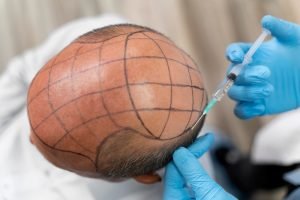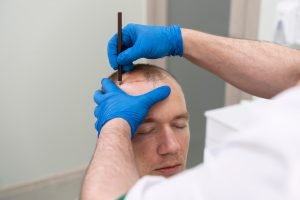Undergoing a hair transplantation procedure can be a life-changing experience, restoring not just your hair but also your confidence. However, like any surgical procedure, it’s essential to be aware of potential risks and complications. While hair transplantation is generally considered safe, understanding these factors is crucial for informed decision-making.
Possible Risks and Complications
1. Infection: Infections can occur in the donor or recipient areas. However, with proper sterile techniques and post-operative care, the risk is relatively low.
2. Scarring: Hair transplant procedures can leave tiny scars in the donor area, especially in Follicular Unit Extraction (FUE). These scars are usually minimal and easily concealable.
3. Pain and Discomfort: Some level of pain and discomfort is common after the procedure, but it’s usually manageable with pain medications and subsides within a few days.
4. Bleeding: While some bleeding is expected during the surgery, it’s typically minimal and controlled by the surgical team. Excessive bleeding is rare.
5. Side Effects: Side effects may include itching, swelling, and numbness in the treated areas. These are often temporary and part of the healing process.
6. Poor Planning: Inexperienced surgeons or inadequate planning can lead to unsatisfactory results. It’s essential to choose a skilled and experienced surgeon.
7. Graft Dislodgement: In some cases, transplanted grafts may not “take” and can be dislodged. This can often be addressed with a touch-up procedure.
8. Facial Edema: Swelling of the face, particularly around the eyes, can occur post-surgery but typically subsides within a few days.
9. Sterile Folliculitis: In rare cases, an infection of the hair follicles can occur. Proper hygiene and antibiotics can prevent and treat this condition.
10. Uncontrolled Bleeding: While unusual, uncontrolled bleeding can happen during surgery. A skilled surgical team can manage this effectively.
11. Complications in Specific Medical Conditions: Patients with underlying medical conditions like diabetes or hypertension should be carefully evaluated and monitored to minimize risks.
Minimizing Risks and Ensuring Safety
It’s important to note that while these risks and complications are possible, most individuals undergo hair transplantation without significant issues. The key to a successful and safe procedure lies in:
1. Choosing a Skilled Surgeon: An experienced and board-certified surgeon can minimize risks and ensure optimal results.
2. Following Preoperative and Postoperative Instructions: Adhering to your surgeon’s guidance regarding pre-surgery preparations and post-surgery care is crucial for a smooth recovery.
3. Maintaining Good Health: Patients with underlying medical conditions should have those conditions well-managed before the procedure.
4. Sterile Techniques: Ensuring that the surgical team maintains strict sterile techniques can prevent infections and complications.
5. Proper Planning: A thorough consultation and a well-designed hair restoration plan are essential for a successful outcome.
6. Regular Follow-ups: Post-operative follow-up appointments allow the surgeon to monitor your progress and address any concerns promptly.
Conclusion: Balancing Risks and Rewards
While understanding the potential risks and complications of hair transplantation is essential, it’s equally important to recognize that when performed by skilled professionals and in appropriate candidates, it is generally considered a safe and effective procedure.
Individual experiences may vary, but most patients enjoy a significant improvement in their hair density and self-confidence. To minimize risks, ensure that you choose an experienced surgeon and follow their guidance diligently. The rewards of a successful hair transplant can be life-changing, offering renewed self-esteem and a more youthful appearance.





